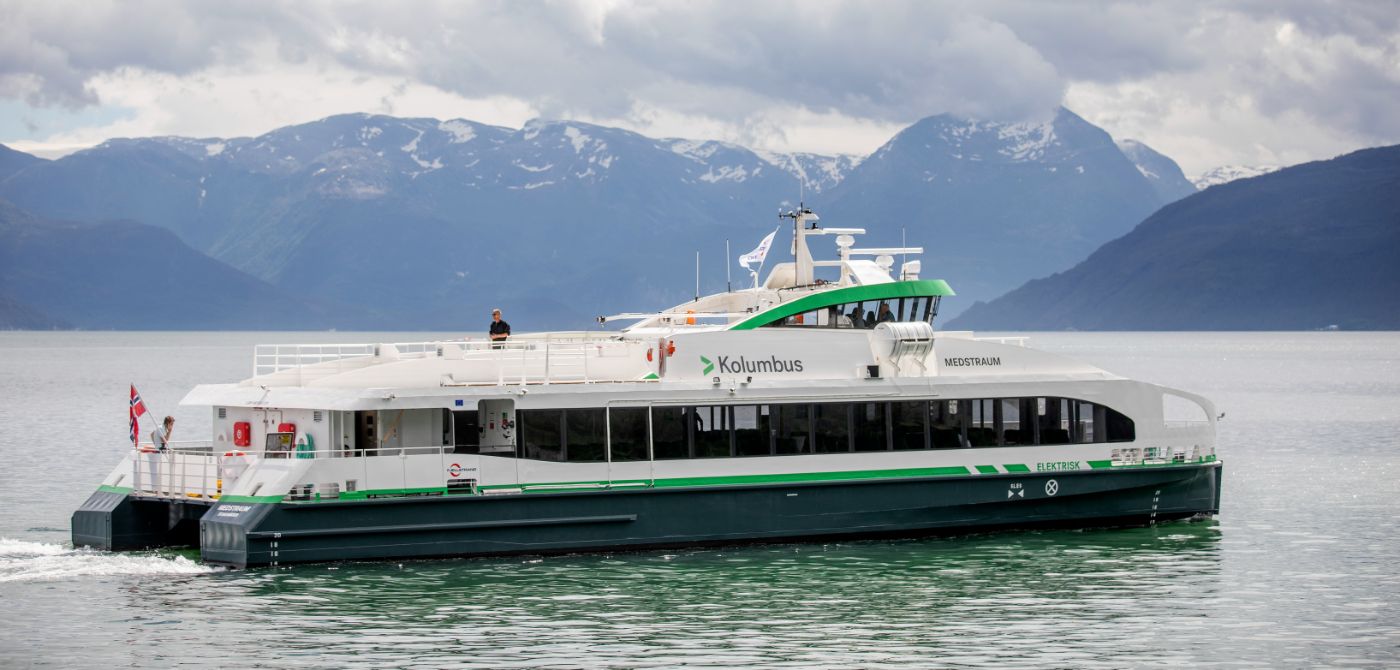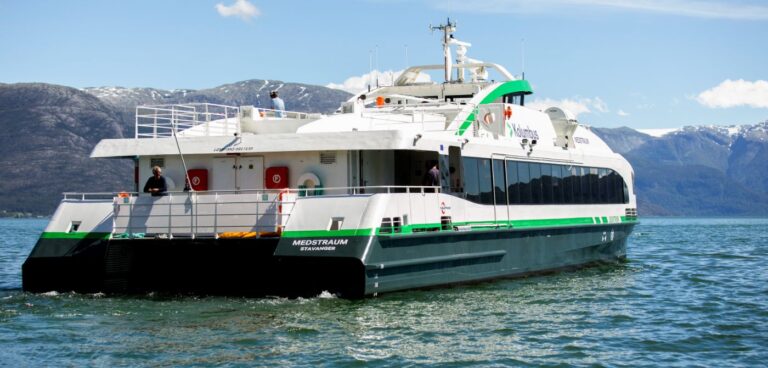A fully electric and zero-emission fast ferry called the MS Medstraum has begun its maiden voyage from the Fjellstrand shipyard in Norway, to its new home in the port of Stavanger, Norway.
Stated to be the world’s first fully electric high-speed ferry, the vessel features two 550kW electric engines and has a battery capacity of 1,524kWh, enabling a cruising speed of 23kts during operations and a top speed of 27kts.
During construction, the shipyard Fjellstrand utilized several modular manufacturing methods to cut production and engineering costs to ensure the all-electric high-speed vessel is competitive cost wise and in terms of its sustainability credentials.
“Medstraum will cut our emissions by 1,500 metric tons a year, despite operating on our least energy-demanding route,” commented Mikal Dahle, project manager, Kolumbus.
The 30m Medstraum vessel will serve a route for Kolumbus between Stavanger, Byøyene and Hommersåk in Norway starting in late summer 2022.
“It’s been challenging building this ship, as it’s never been done before, but we’ve learned a lot. Fast ferries require a lot of energy, so we needed to make Medstraum lighter and a lot more efficient than traditional fast ferries,” said Edmund Tolo, head of research and development, Fjellstrand. “It is revolutionary that a vessel of this size can operate at 23kts for an entire hour by electricity alone.”
 “This could really be the start of a new adventure for our industry,” added Hege Økland, CEO of Maritime CleanTech. “Not only have the project partners developed and demonstrated a new and emission-free propulsion system that can maintain higher speeds than before, we have also adopted completely new modular design and construction methods that will revolutionize the way we build boats in the future.”
“This could really be the start of a new adventure for our industry,” added Hege Økland, CEO of Maritime CleanTech. “Not only have the project partners developed and demonstrated a new and emission-free propulsion system that can maintain higher speeds than before, we have also adopted completely new modular design and construction methods that will revolutionize the way we build boats in the future.”
“The modular way of thinking is absolutely central to the project,” continued Økland. “This means that ships can be purpose-built by putting together finished modules, which can be built in different places. This will save both time and money in the design and construction phase. It will also make it easier to get more boats into the market faster. This way, we can reach future emission requirements faster, by replacing fossil fast ferries with electric ones; like Medstraum.”



